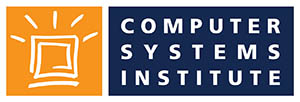Sending a text. Pouring a cup of coffee. Reviewing a resume. What do these things have in common? They all take 10 seconds or less.
*Cue your double take*
That’s right, recruiters spend less than 10 seconds – 7.4 to be exact – screening a candidate’s resume, according to the Ladders Inc. 2018 Eye-Tracking Study. Taking this into account, it is critical that you clearly and quickly sell your skills and talents to potential employers. This can be particularly challenging for students or recent graduates who have limited relevant job experience…but not impossible. Here’s how to create a resume that warrants a second glance:
Tell a story about yourself AND the prospective role. When crafting your resume, you must draw a clear picture of your talents, work history, education, career goals, and more. The kicker? All of this information should be tailored to the position requirements. Always, always customize your resume.
Break your resume into clearly defined sections. Your resume should include:
- Your name, email address, and phone number.
- A summary of your qualifications that highlights your achievements, skills, and experience. This brief blurb should appear directly under your name and contact information to help recruiters quickly glean your qualifications.
- An education section that features the name and location of your school, the credentials you earned, your field of study, and your graduation year (or anticipated graduation year). You can also include your GPA if it demonstrates academic merit. According to Monster, “It’s best to only list a GPA of 3.0 or above.”
- The industry certifications you have earned. If you are new to the workforce, you likely won’t be able to boast years of experience, but what you lack can be supplemented with other relevant qualifications that can validate your skills to potential employers, such as certifications.
- A list of your professional skills that relate to the job listing like attention to detail, communication, and collaboration.
- The awards you have received, if applicable. There is no time to be modest when it comes to your achievements!
- Your work history, listed in reverse chronological order (meaning your most recent experience appears first). As you build this section, consider any and all relevant experience you might have, including externships, volunteer work, etc. Ensure that everything included focuses on the specific results/outcomes you achieved.
When crafting this content for your resume, you must think strategically. As mentioned above, every piece of information you share should tie back to the job you are applying for.
Incorporate keywords and phrases into your resume. Upon first glance, a recruiter or keyword tracking system will look for specific words and phrases that show your skills and expertise. According to Indeed, the keywords you use should describe your hard and soft skills, as well as demonstrate your accomplishments.
Design your resume for the job you want. There are countless resume templates available on the web, some flashier than others. When choosing a design, consider the job you are applying for. If you are pursuing a career in graphic design, use your resume to showcase your skills. If you are entering the world of medical coding and billing, you may want to consider a more reserved approach.
When in doubt, follow these best practices:
- Use Verdana or Arial fonts.
- Avoid varying the font size on your resume. Instead, use an 11 or 12 font size, and consider bolding headlines and dates for differentiation.
- Do not use italics, fancy fonts, or page borders.
- Never include watermarks or background colors on your resume. Use a plain white background with black font.
- Always print hard copies of your resume on quality paper.
Proofread again, and again…and again! One of the easiest ways to ensure your resume gets cast aside is by having spelling or grammar mistakes. Try reading your resume aloud, asking a friend or advisor to review, and using Spell Check before submitting.
This is a lot of information to digest. But the good news is you don’t have to go it alone. As a student or recent graduate, you have multiple tools at your disposal to create a knock-out resume. Organizations like Computer Systems Institute (CSI) are committed to helping you from your first day on campus (or Zoom!) through the job search.
Keep in mind that a resume is just one component needed when applying for a job. To learn more career preparation tips and tricks, check out CSI’s blog.







